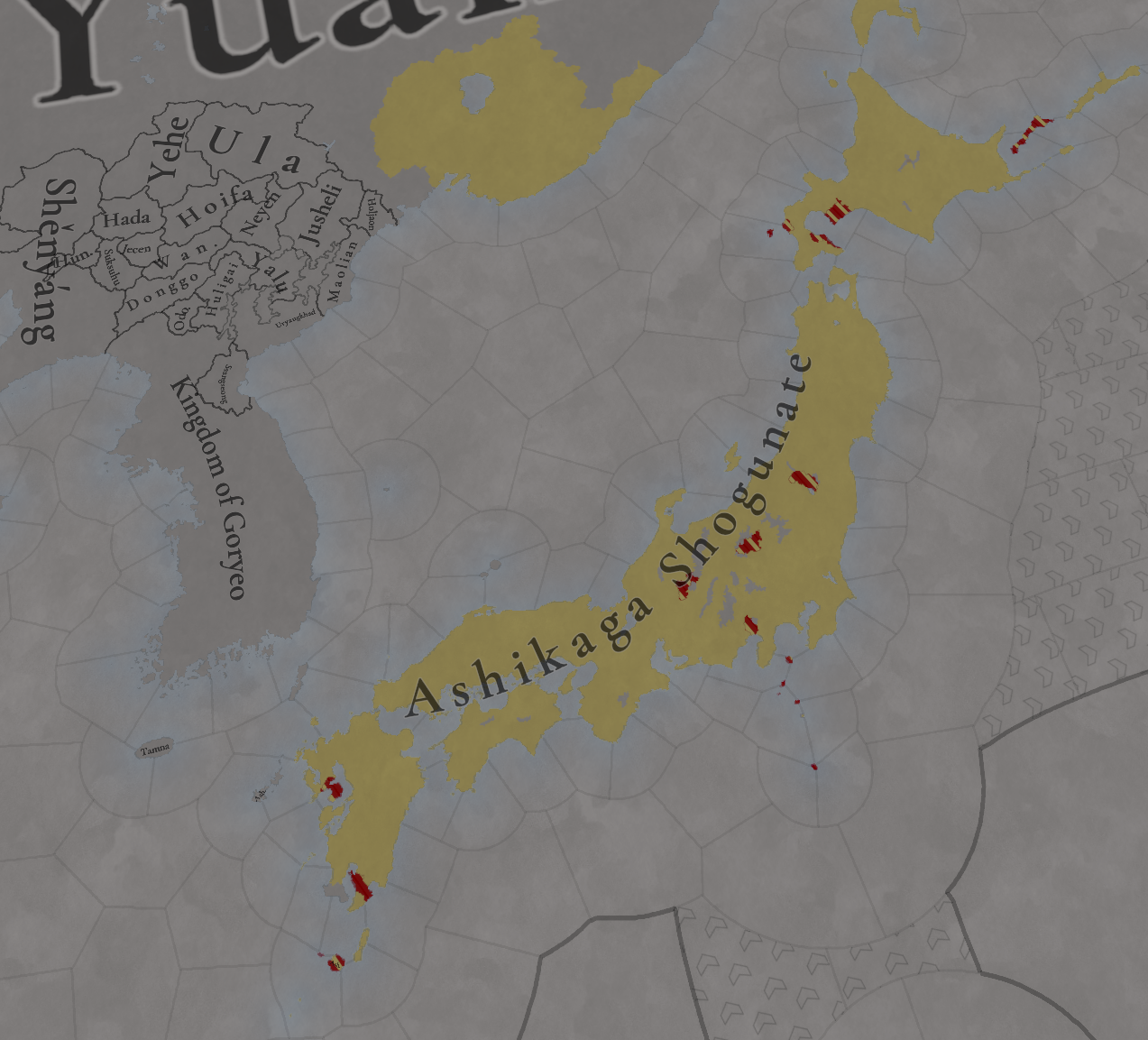Hello and welcome to another week of Tinto Maps Feedback. Today, we will take a look at Korea and Japan. This area has required less rework than other ones, but still some adjustments have been made.
Countries:


Dynasties:

Country ranks and Government Types:


Locations:









Provinces:

Areas:

Terrain:



Development:

Harbors:

Cultures:

Languages:


Religions:

Raw Materials:






Markets:

And not much has changed with the clans distribution, but here you have it:

That is all for today, this week we will not move far from these areas, here’s the schedule:
And always as a reminder: Wishlist Europa Universalis V now!
ADDITIONS
Added the following:
Renamed the following:
Added the following:
- Locations
- Tamura
- Seongwi
- Jindo
- Heungyang
- Namhae
- Geoje
- TAGs
- Shěnyáng
- Characters
- ssg_jo_hwi
- ssg_jo_yanggi
- ssg_jo_rim
- ssg_jo_sosaeng
- ssg_jo_don
- ssg_jo_inbyeok
- kor_ja
- kor_ko
Renamed the following:
- Locations:
- Renamed Aira to Kuwabara
- Renamed Jeju to Tamna
- Total rework of areas and provinces of Korea
- Renamed Tōhoku to Ōu
- Renamed Jeju culture to Tamna
- Changed several Raw Goods as suggested
- Total Review
- Redrew several Locations
- Added someminorities
Countries:


Not many changes here, only the addition of Shenyang.
Dynasties:

Not many changes here either, but you can see that Shenyang has the same dynasty as Goryeo.
Country ranks and Government Types:


Locations:

As I said, no major changes here, only minor adjustments.








Provinces:

Areas:

Provinces and areas of Korea is what has received the most change here.
Terrain:



Development:

Harbors:

Cultures:

Not much change in the major cultures, although a bit of adjustment of minorities.
Languages:


Location’s language first, Court Language second.
Religions:

Raw Materials:






Markets:

And not much has changed with the clans distribution, but here you have it:

That is all for today, this week we will not move far from these areas, here’s the schedule:
- Tuesday: Tinto Flavour for Korea and Manchuria
- Wednesday: Tinto Talks for Shintō and the Shogunate
- Thursday: ‘Behind the Music of Europa Universalis V - Composing the Grandest Score’ video!
- Friday: Tinto Flavour for Japan and the situations of the Nanbokuchō and Sengoku Jidai
And always as a reminder: Wishlist Europa Universalis V now!
- 128
- 31
- 9
- 3
- 1


